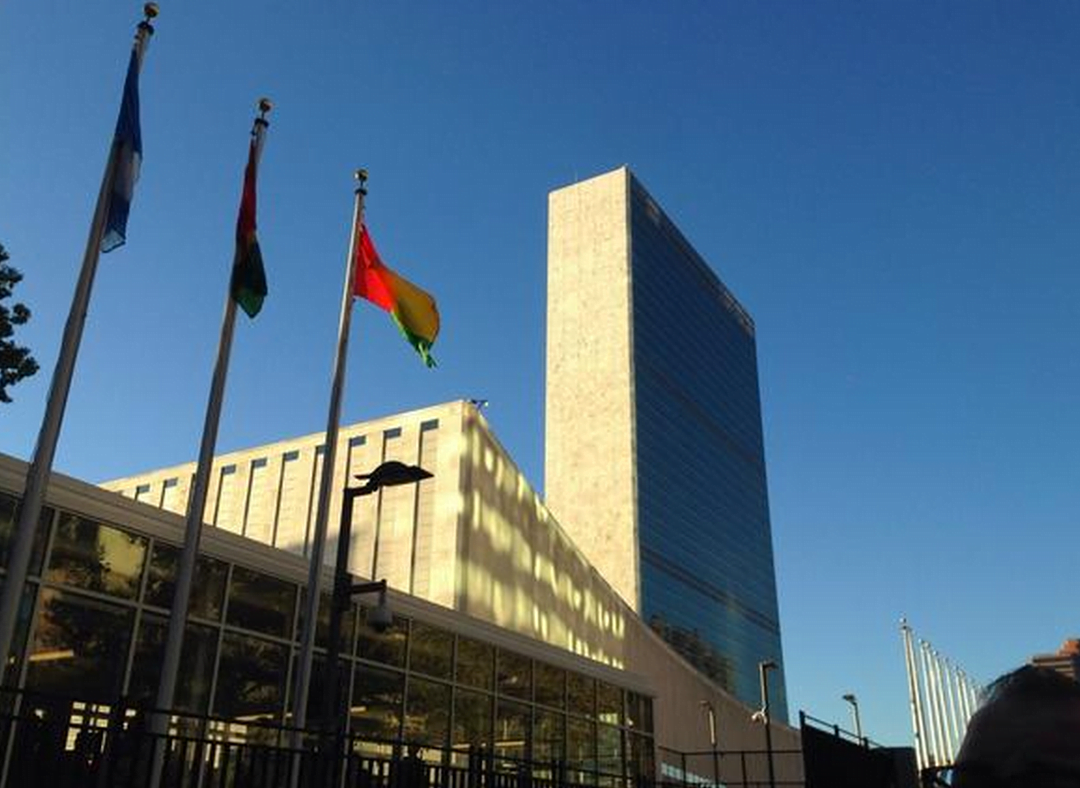

UN confabs like this can sometimes devolve into gabfests that don’t result in much action. But what is distinguishing today’s meetings from others is that countries are bringing tangible commitments to the table. They are going on record — before their colleagues and before the world — about what they are going to do about climate change. This is why today’s UN Climate Summit is so significant.
We are seeing two kinds of commitments: the first are financial ones. These are mostly going to the Green Climate Fund, which is an international financing mechanism to help developing countries grow their economies in sustainable ways. (The fund is a key lynchpin in getting developing countries on board with a legally binding climate change accord which will be negotiated over the next year.) Additionally, developing countries are pledging to put their own resources to their own sustainable development. The second big kind of commitments we are seeing are policy commitments. Some of these are very bold–including pledges for entire countries to go carbon neutral by a specific date.
I’ll update this list throughout the day.
Some of the Big Financial Contributions and Commitments.
-France kicked off the day with a big announcement. French President Francois Hollande pledged $1 billion to the Green Climate Fund “over the next few years. ” He added that this would be seed money that he hopes would attract others to the cause.
-Not to be outdone, Germany matches France and also pledges $1 billion to the Green Climate Fund.
-Danish PM Helle Thorning Schmidt announced that Denmark will give $70 million to Green Climate Fund, on top of existing $350 million
From the developing world, we are also seeing financial commitments in how they allocate their own budget. Here are a few examples:
-Sheikh Hasina, prime minister of Bangladesh, says they have raised $385 million from within their own resources to adapt to climate change.
-Papua New Guinea is spending “$150 million on regional Pacific assistance”
-Myanmar is introducing a 30 year forest strategy “to safeguard a further 30% of our forests”
2) Notable Policy Commitments. Countries are Now on the Record.
-The European Union President Manuel Barraoso announced that the EU has committed to reducing emissions across its 28 member bloc by 80%-95% by 2050.
-President Obama issued an executive order today to “incorporate climate change resilience” into international development. The order formally and officially directs all US agencies that deal with international development and multi-lateral diplomacy to integrate sustainability into policy and diplomacy around development. He also announced that the USA would announce new emissions reductions targets by early next year.
-The Prime Minister of one of those member states, Denmark, announced that it aims to be fossil fuel free by 2050
-Sweden’s Prime Minister also said he predicts a 40% reduction of Greenhouse Gas Emissions by 2020, and then down to zero by 2050.
– Belgium’s Prime Minister, Elio Di Rupo, says they will reduce emissions by 85% by 2050.
-But the commitments were not restricted to wealthier countries of the global north. Freundel Stuart, prime minister of Barbados said that by 2029, 29% of his country’s electricity will be green.
Mexico’s president said that by 2018, more than one third of electricity-generating capacity will be based on renewables.
-Trinidad and Tobago’s chief says 100% of its electricity is from natural gas.
– St Lucia sas that 35% of its electricity will be from renewables by 2020.
-China reiterated country’s goal to cut carbon intensity 40 – 45% by 2020 over 2005 levels and pledged to double its level of financial support to other developing countries.
3) Collective Commitments Around Discreet Issues
As the day progresses, there’s a third kind of commitment that we are beginning to see: joint action plans. These are public-private partnerships and other collections of governments and civil society groups banding together around a specific, common agenda.
One example: this afternoon 130 governments, plus companies, civil society and indigenous peoples signed onto the New York Declaration on Forests, “pledging to cut the loss of forests in half by 2020 and, for the first time, to end it a decade later in 2030.”
Another: “Multinational oil and gas companies have joined forces with governments
and international environmental organizations to cut the emissions of methane.” This is called the “The Oil & Gas Methane Partnership.”
Big h/t and #FF to @Climate2014Live, which is compiling these commitments frenetically on twitter. When I wasn’t able to watch the speeches, I’ve borrowed some language from their tweets in an effort to be as precise as possible.
Credit: Ban Ki-moon, Secretary General of the United Nations, greets Barack Obama, President of the United States, at the Climate Change Summit at the United Nations in New York, Tuesday, Sept. 23, 2014. (Photo/Stuart Ramson/UN Dispatch)
